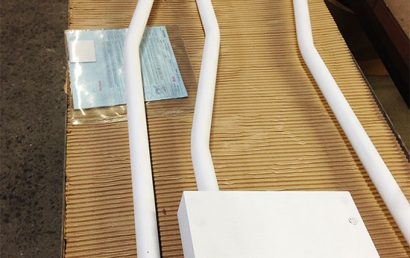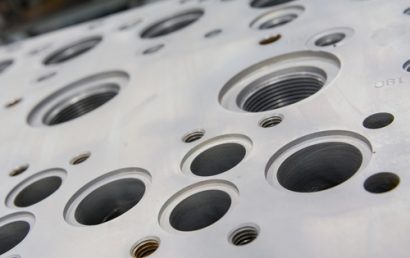Thermal Spray vs. Hard Chrome Plating
Do you know why thermal spray coating has replaced hard chrome plating as the preferred surface treatment for many applications across a wide array of industries? In this post, you will learn the answer as we put thermal spraying and hard chrome plating side by side for comparison.
Why Thermal Spray is Introduced as an Alternative to Hard Chrome Plating
For many years, hard chrome plating has been a cost effective industry solution for producing surfaces that provide corrosion resistance and wear resistance. However, it isn’t easy to control how thick the chrome plating will be and if the component on which you want to apply hard chrome plating is large this can present problems due to size limitations of chrome plating tanks. The hard chrome plating process also has issues with the disposal of its by-products and therefore, the market realizes that we have to find alternative technologies for engineering surfaces. As such, Thermal Spray has emerged as a proven replacement for hard chrome plating.
Advantages of Thermal Spraying
Let’s take a look at the advantages that thermal spraying has over hard chrome plating:
- Wide variety of material choices
- More environmentally friendly when it comes to waste disposal (GREEN!)
- Higher deposition rate
- Cheaper application costs (when the component is big in size and needs a thick coating)
- Virtually no limitation on component size to be coated
- Thermal spray equipment is more portable than hard chrome plating equipment
- Faster application time
- Can achieve thicker and denser coatings as well as uniform coating thickness
Advantages of Hard Chrome Plating
Here are the pros of going with hard chrome plating instead of thermal spraying:
- Cheaper application costs (when the component is small in size and needs a thin coating)
Disadvantages of Thermal Spraying
The thermal spray processes are not without their limitations. Here’s a look at some of the most common limitations:
- Some thermal spray processes produce a great deal of noise so this will involve noise attenuation
- Surface coverage might not be as easy to achieve in the case of plating. This is because thermal spraying is after all a line of sight process and it is harder to coat interior diameters.
Disadvantages of Hard Chrome Plating
Here are some of the limitations of hard chrome plating:
- Application time is much slower than thermal spraying. Even for 0.001 inches, the plating process can take at least one hour
- It is hard to achieve uniform thickness for plating because there will be excess plating buildup concentrated in the edge regions
- The component that needs to be plated must be completely submerged in the plating tank which means that it will be hard to mask an area on the component that you do not want it to be plated
- Plating tanks can get contaminated which can affect the plating results
- The plating process can result in poor adhesion due to micro-cracks or poor surface preparation
All in all, it is easy to see why thermal spraying has become the preferred surface engineering technology in the market due to the amount of advantages it has over hard chrome plating. When it comes to disadvantages, we can also see that hard chrome plating has more issues to overcome than thermal spraying.
If you have been using hard chrome plating for your products for many years, why not speak to one of our thermal spray specialists and find out how thermal spraying can improve the surfaces of your products and help you save costs at the same time? Call us today!



